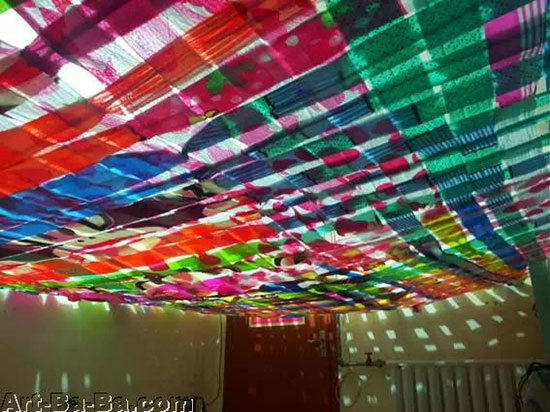 |
|
A room from the the "Apartment of Dreams Come True". [Photo/art-ba-ba.com] |
An icy wind blows through the streets of Beijing as we head for the northeastern part of the capital. We are driving to a neighborhood called Cuigezhuang, which lies in Chaoyang District beyond the Fifth Ring Road. Our destination is the Dongxindian residential area, far from the city center. Its inhabitants are mainly people from other places, and those on low incomes. There are many quarters like Dongxindian in the metropolitan suburbs.
We drive through a street of the kind that most foreign visitors to the capital might never catch sight of. It is permeated with the unruly yet fleeting charm of small Chinese provincial towns. Nothing here is in any way reminiscent of the modern building complexes in Beijing's central business district around the China World Towers, or of the freshly painted historical tourist attractions throughout the city, even though they are just a couple of kilometers away. That here of all places is the site of the "Apartment of Dreams Come True" seems nothing less than utopian.
Through a shabby backyard and up a flight of bare concrete stairs we reach the building that bears our destination's address. One uniform apartment door closely follows the next on the long, dark corridor. Door number B237 is purported to be the one behind which this mysterious apartment, in which dreams are said to come true, is located.
As we enter the room we see that the already small studio apartment is divided into two levels by a dense braid woven from strips of colorful bed sheets. It separates the room into upper and lower levels.
Stooping, we make our way directly to Sun Shaokun, a young Chinese artist from Beijing's neighboring province of Hebei. She installed the patchwork quilt in the apartment as a room divider. We all squat in the lower, darker half of the room while talking to her about her artwork, as multi-colored shafts of light from the ceiling light above speckles our faces and clothes.
Thirty-four-year-old Sun designed and created the room divider, this unique piece of installation art, in and specifically for the "Apartment of Dreams Come True," although the cramped space of this suburban apartment seems worlds apart from the concept of a dream house. The plaster on the walls in this spartanly furnished studio is flaking off, and at the rear are a grubby kitchenette and a small toilet in need of repair.
"It's mostly poorer people that live in this area, and my artwork is connected specifically to the aesthetics of that social class," Sun says. She chose simple, cheap bed sheets, RMB 15 each, or around two Euros, as the raw material for her installation.
"I want my work to express a feeling of constraint. Dividing the room into lower and upper spheres also implies to me a certain social meaning," Sun explains. She goes on to emphasize that the realization of this piece of work connects closely with the "Apartment of Dreams Come True" as space for creation.
Song Xi and Yang Xinjia, two young Chinese artists both born in 1983, provide this place of creation for Sun and other contemporary, mostly young artists. The two friends started their project in November 2014. Through their "Apartment of Dreams Come True" they want to create a space in which independent artists from China and abroad can work on and bring to fruition their own ideas, they told us.